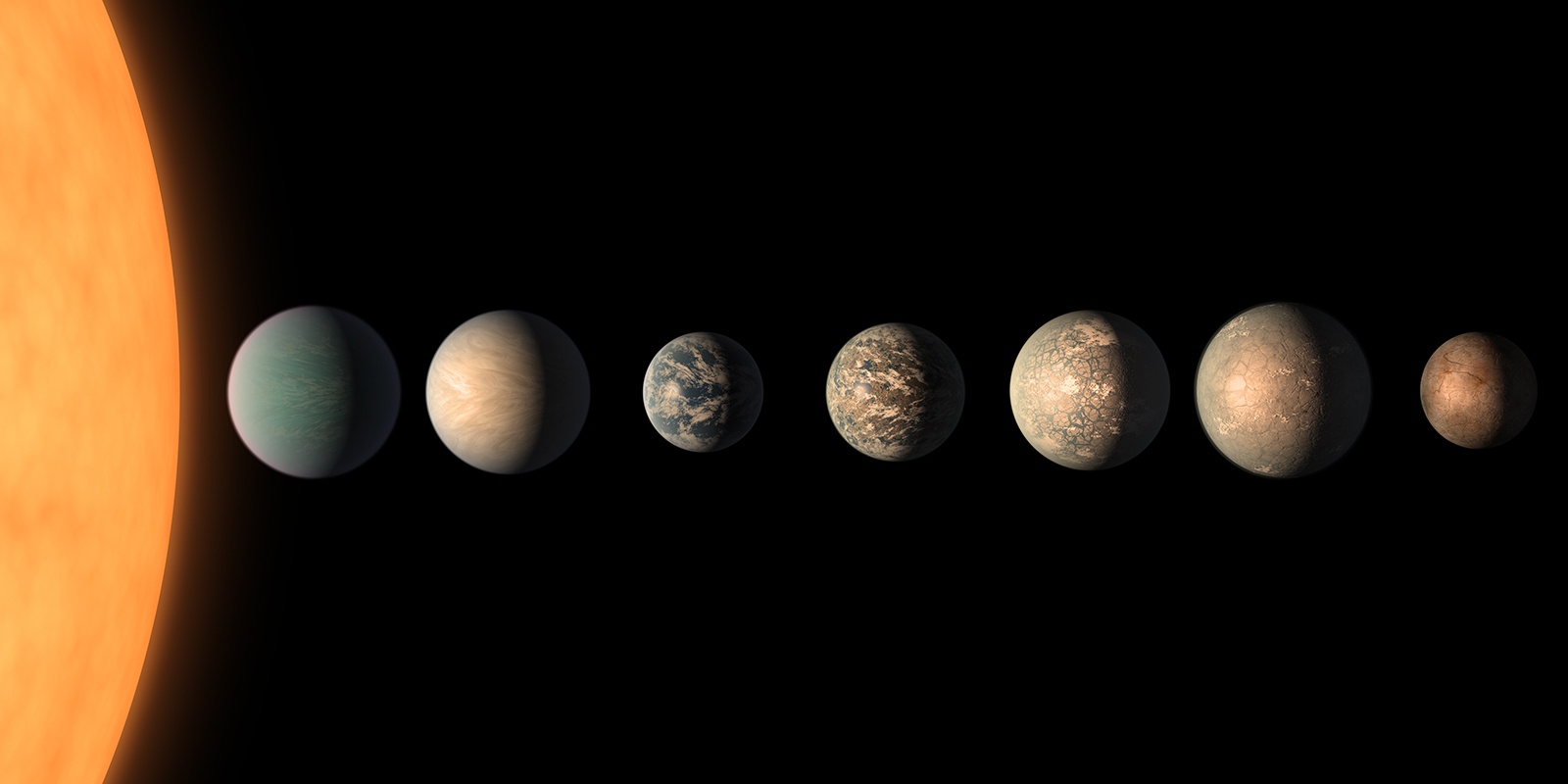Trappist-1 is a fascinating exoplanetary system. Seven worlds orbiting a red dwarf star just 40 light-years away. All of the worlds are similar to Earth in mass and size, and 3 or 4 of them are potentially habitable. Imagine exploring a system of life-rich worlds within easy traveling distance of each other. It’s a wonderful dream, but as a new study shows it isn’t likely that life exists in the system. It’s more likely the planets are barren and stripped of their atmospheres.
The Trappist system has gained a lot of attention since its discovery in 2017, because at first blush it seems to be a perfect system for alien life. Plenty of warm terrestrial worlds, similar to our inner solar system. But one question was whether red dwarf stars are suited for habitable worlds. Red dwarfs are much cooler than the Sun, so any habitable world would need to orbit the star very closely. Red dwarfs are also known to have intense solar flares, which can bake nearby planets in X-rays and other dangers. Could life survive these threats over a span of billions of years? If Trappist-1 is typical, the answer seems to be no.

This new work looks at the potential atmospheres of the Trappist planets. Observations from JWST have confirmed that the two innermost planets lack any meaningful atmosphere, but that was expected. In our own system, Mercury has no atmosphere. But it has been generally thought that the cooler and more distant worlds of Trappist-1 could maintain atmospheres. So the team looked to computer simulations.
Given observations of Trappist-1 and other red dwarf stars, the authors calculated the amount of high-energy radiation the star likely emits over time. They then simulated the effects of that radiation on the possible early atmospheres of the outer Trappist exoplanets. From that, they modeled the rate of atmospheric evaporation. All planets lose a bit of atmosphere over time, even Earth. The question is how much and how quickly. The team found that for the Trappist worlds, the answer is a lot and fast.
Based on the current radiation levels of Trappist-1, even its outer planets would lose an Earth’s atmosphere worth of gases within a few hundred million years. Planets such as Earth, Mars, and Venus had very thick atmospheres in their youth, so we could assume the Trappist worlds would have as well. But young red dwarfs give off even more high-energy radiation, so atmospheres would evaporate at an even faster rate. Since Trappist-1 is a bit older than our Sun, about 8 billion years old, any atmosphere the Trappist worlds might have had is likely long gone.
So the Trappist-1 system is likely little more than a collection of warm, dry rocks. And this could be true for most other red dwarf systems. That has some pretty serious implications for the possibility of extra-terrestrial life. Red dwarfs make up about 75% of stars in our galaxy, compared to only 8% for Sun-like stars. If red dwarfs strip the atmospheres of their worlds, then most planetary systems are lifeless.
So look around. The vibrant living you see may be much more rare than we thought.
Reference: Van Looveren, Gwenaël, et al. “Airy worlds or barren rocks? On the survivability of secondary atmospheres around the TRAPPIST-1 planets.” arXiv preprint arXiv:2401.16490 (2024).


I assume the criticism of the work would come down to that it is using just one model for their conclusion. And that it is a 1D model at that, while the step from 1D to 3D meant different conclusions on habitability for global climate models.
In any case it will be interesting to see more analysis like this, that tries to improve on what has been used before.